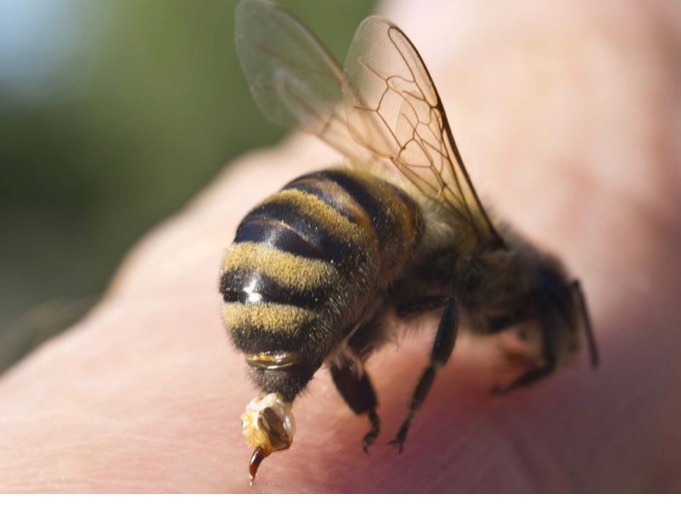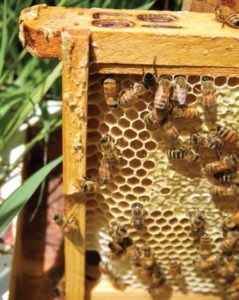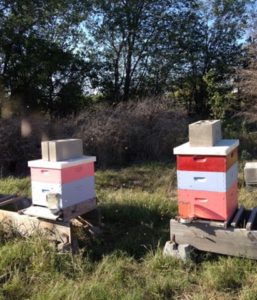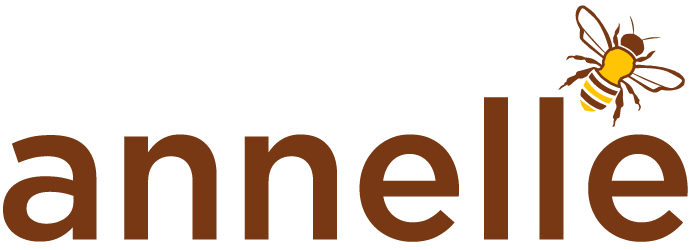
This time of year my family and friends get excited because they all know I am gifting them with honey. Honey has long been the symbol of sweetness, good health and prosperity. These are wonderful wishes to pass on to others for 2021. It is common knowledge that the honey bee makes honey, but did you know that they also provide us with bee bread, wax, propolis, bee venom and royal jelly. All these by-products of the beekeeping process are diverse in their uses and can be very beneficial to us humans.
 Bee bread is the main source of protein for the honeybee worker’s and larvae. The older female adult bees mix around 160,000 pollen grains with nectar, honey and some of their saliva to make the pellet called bee bread. The pellet is deposited in honeycomb cells for the bees to eat.
Bee bread is the main source of protein for the honeybee worker’s and larvae. The older female adult bees mix around 160,000 pollen grains with nectar, honey and some of their saliva to make the pellet called bee bread. The pellet is deposited in honeycomb cells for the bees to eat.
Bee bread has an antibacterial role which helps immune system functioning. People eat bee bread to help with environmental plant pollen allergies.
Bees wax is a natural secretion from wax glands on the sides of the body of honey bees. It is used primarily as a building block for bees’ honeycomb cells in which the young are raised and honey and pollen are stored. Bees use about 6 pounds of honey to produce 1 pound of wax. The uses of beeswax are found in numerous products, including skin care products, candles, and furniture polish products.
 Propolis or bee glue is a resinous mixture that honey bees produce by mixing saliva and beeswax with sticky resin gathered from tree buds, sap flow, or other botanical sources. The material seals the hives and helps protect the bees from disease, wind and cold.
Propolis or bee glue is a resinous mixture that honey bees produce by mixing saliva and beeswax with sticky resin gathered from tree buds, sap flow, or other botanical sources. The material seals the hives and helps protect the bees from disease, wind and cold.
Because of its antibacterial, antifungal, antiviral, and anti-inflammatory effects, propolis has been shown to have great medicinal qualities. It is used in ointments and salves for healing cuts and wounds.
 Honey bee venom has been used as a therapy for centuries. The venom is a colorless, acidic liquid excreted through the stingers of the honey bee when they feel threatened, it is primarily responsible for the pain associated with bee stings. It contains both anti-inflammatory and inflammatory compounds. The venom is used in a number of ways, it’s added to products like extracts, supplements, moisturizers, lotions and lozenges. It is used in acupuncture and administered by healthcare professional by injection to treat people with severe allergies to bee stings.
Honey bee venom has been used as a therapy for centuries. The venom is a colorless, acidic liquid excreted through the stingers of the honey bee when they feel threatened, it is primarily responsible for the pain associated with bee stings. It contains both anti-inflammatory and inflammatory compounds. The venom is used in a number of ways, it’s added to products like extracts, supplements, moisturizers, lotions and lozenges. It is used in acupuncture and administered by healthcare professional by injection to treat people with severe allergies to bee stings.
Royal jelly is the food fed to queen bee larvae. It is very rich in protein and fatty acids. Royal jelly is produced in the mouth glands of the young bees. Each queen needs only a teaspoon of royal jelly to thrive. Royal jelly is widely claimed to reduce inflammation and oxidative stress. It is used to strengthen immunity, and can be taken orally or topically.
It is thanks to the hardworking honey bee that we have a variety of food sources and supply for us to survive. As you see from the list above, there are plenty of reasons to be buzzing about nature’s hardest worker.
Bee Happy,
Karen Jones

